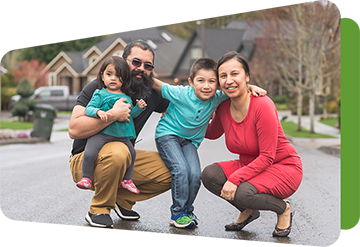This WIDA Snapshot provides an overview of who multilingual children are, the benefits of promoting home language(s), and initial ideas for developing reciprocal partnerships with multilingual families.
 In high-quality early care and education (ECE) programs, multilingual children and their families feel welcome. Educators work to create two-way relationships with families and encourage families to use their home language(s) with their young children. What does this look like in practice? WIDA offers ideas that ECE professionals can use to build relationships with families for the purpose of promoting multilingual children’s language development.
In high-quality early care and education (ECE) programs, multilingual children and their families feel welcome. Educators work to create two-way relationships with families and encourage families to use their home language(s) with their young children. What does this look like in practice? WIDA offers ideas that ECE professionals can use to build relationships with families for the purpose of promoting multilingual children’s language development.
Multilingual Children
WIDA defines multilingual children as culturally and linguistically diverse children, ages birth to five years, who are learning two or more languages. Multilingual children are exposed to multiple languages in their homes, communities, and/or ECE settings, and they develop and use language in dynamic ways. In the field these children are commonly referred to as dual language learners, or DLLs. The number of young multilingual children is on the rise and is projected to continue to grow. While multilingual children come from many backgrounds (languages spoken, country of origin), a large majority are born in the U.S. Many variables can affect the rate and patterns of language development. Examples include timing, quantity and quality of language exposure, opportunity to use languages, and community attitudes toward languages other than English.
The Benefits of Promoting Home Language
Children all over the world learn two or more languages during their first five years of life, and research shows this comes with lots of benefits.
- Cognitively, multilingual children demonstrate a higher ability to keep focused attention and higher problem-solving skills than children who speak one language only.
- Social-emotionally, multilingual children benefit by maintaining strong ties to their family, culture, and community, and have been shown to have a heightened understanding of other people’s feelings.
- Linguistically, multilingual children have better skills in thinking about language than children who only speak one language. Additionally, literacy knowledge in one language can transfer to another language.
Partnering with Families
Recent position statements by the National Association for the Education of Young Children emphasize the importance of establishing reciprocal partnerships with families. A first step for establishing partnerships is to ensure that you create a welcoming environment for multilingual families. Here are some ideas:
- Gather and display art and/or artifacts that represent the families in the program. For example, display photos of people, places, and objects that hold special meaning for the children in your care.
- Ask families about what makes them feel welcome and incorporate their ideas into your environment.
- Display multicultural/multilingual bulletin boards with information about relevant cultural events in the community, such as book readings/signings with local multilingual authors.
- Play music in all the languages represented by the families in the program.
To develop reciprocal partnerships with families, ECE educators can try these approaches:
- Ask families to share the language and learning goals and concerns they have for their children. Address these in your practice.
- Invite parents to share about their home and community environment, including language and cultural dimensions. Incorporate this into your environment and resources in an ongoing way.
- Implement two-way communication strategies that move beyond sharing information from the “school to the home.”
To encourage use of families’ home language(s) at home, educators can remind families that:
- Using the home language helps children communicate with and connect to family members who might not speak English.
- Children benefit most when adults speak to them in the languages they know best, because it allows adults to share more complex ideas. Children can also access cultural concepts that may only exist in the languages spoken at home.
- There are cognitive, social-emotional, and linguistic benefits of learning two or more languages during their first five years of life.





